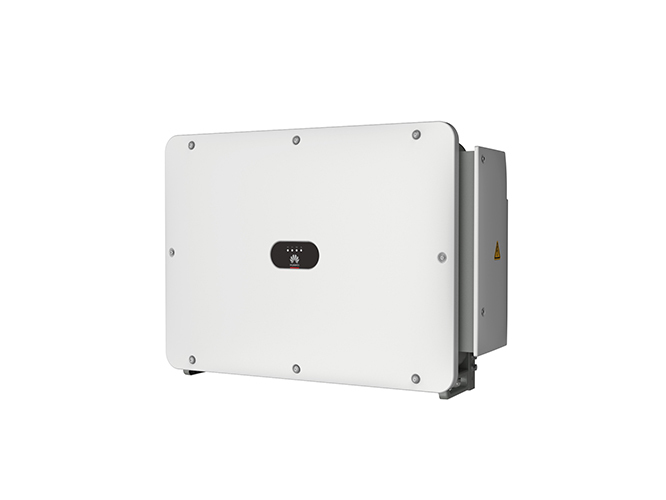The Working Principle and Application Scenarios of Utility-Scale Inverters
Introduction
As the global demand for renewable energy continues to grow, solar power systems have emerged as a leading solution due to their sustainability and environmental benefits. Central to these systems are utility-scale inverters, often referred to as grid-tied or industrial inverters, which play a crucial role in converting direct current (DC) from solar panels into alternating current (AC) suitable for use in the power grid. This article explores the working principle of utility-scale inverters and analyzes their application scenarios in various settings.
Working Principle of Utility-Scale Inverters
Utility-scale inverters, which are a subset of power inverters, operate based on a few core principles. Their primary function is to convert the DC electricity generated by solar panels into AC electricity, which can then be fed into the electrical grid. Here is a detailed breakdown of their working principle:
DC to AC Conversion
The core function of a utility-scale inverter is to convert DC electricity into AC electricity. This is accomplished using a combination of semiconductor devices and control circuitry. The process begins with the rectification of DC voltage, followed by the inversion process, where the DC voltage is switched on and off rapidly to create an AC waveform. The resulting AC output is then filtered to produce a smooth sinusoidal waveform that matches the grid’s specifications.
Pulse Width Modulation (PWM)
Modern utility-scale inverters use Pulse Width Modulation (PWM) to generate a stable AC output. PWM involves switching the inverter's power devices on and off at high frequencies. The duration of these on-off cycles (known as duty cycles) is modulated to control the output voltage and frequency. By adjusting the width of the pulses, the inverter can produce an AC signal that closely approximates a sine wave.
Grid Synchronization
For a solar power system to connect to the electrical grid, the inverter must synchronize its output with the grid's voltage and frequency. This involves monitoring the grid's parameters and adjusting the inverter's output to match. Synchronization ensures that the power generated by the solar panels is compatible with the grid and prevents potential issues such as power surges or outages.
Maximum Power Point Tracking (MPPT)
Utility-scale inverters are equipped with Maximum Power Point Tracking (MPPT) technology, which optimizes the power output of the solar panels. MPPT algorithms constantly monitor the voltage and current from the solar panels to find the optimal operating point that maximizes energy production. By adjusting the load on the panels, the inverter ensures that the system operates at peak efficiency.

Application Scenarios of Utility-Scale Inverters
Utility-scale inverters are employed in a variety of settings, each with unique requirements and benefits. Here are some common application scenarios:
Solar Power Plants
Large-scale solar power plants, or photovoltaic (PV) farms, use utility-scale inverters to convert the DC power generated by thousands of solar panels into AC power that can be fed into the grid. These inverters are designed to handle high power outputs and ensure efficient operation across large arrays of solar modules. They play a critical role in maximizing the energy yield and maintaining the stability of the power supply.
Commercial and Industrial Installations
Commercial and industrial facilities often deploy solar power systems to reduce their energy costs and carbon footprint. Utility-scale inverters are used in these installations to manage the conversion of solar energy into grid-compatible AC power. Their robust design and high efficiency make them suitable for handling the substantial energy demands of large commercial and industrial operations.
Residential Solar Systems
While utility-scale inverters are typically associated with large-scale applications, they are also used in residential solar systems, particularly in homes with high energy consumption or those seeking to maximize their solar energy production. These inverters can be installed as part of a larger solar system to ensure efficient energy conversion and grid integration.
Remote and Off-Grid Systems
In remote locations or off-grid applications, utility-scale inverters are used to convert solar power for local use or for storage in batteries. These systems are designed to operate independently of the main electrical grid and often include additional features to manage energy storage and supply. Utility-scale inverters in off-grid systems are crucial for providing reliable power in areas with limited access to traditional energy sources.
Advantages of Utility-Scale Inverters
High Efficiency
Utility-scale inverters are designed for high efficiency, converting the maximum amount of DC power from solar panels into usable AC power. Advanced MPPT technology and optimized design contribute to their high performance, which is essential for large-scale energy production.
Scalability
These inverters are scalable and can be deployed in various configurations to match the size and requirements of different solar power installations. Their modular design allows for easy expansion and integration into existing systems.
Reliability and Durability
Built to withstand harsh environmental conditions, utility-scale inverters are highly reliable and durable. They are engineered to operate continuously and handle the rigors of large-scale energy production, ensuring long-term performance.
Challenges and Considerations
Cost
Utility-scale inverters represent a significant investment, particularly for large-scale solar power projects. While their efficiency and performance justify the cost, budget considerations can be a limiting factor for some installations.
Maintenance
Regular maintenance is required to ensure the continued performance of utility-scale inverters. This includes monitoring for potential issues, performing routine checks, and addressing any malfunctions promptly to prevent downtime and energy loss.
Environmental Impact
The production and disposal of utility-scale inverters have environmental implications. Manufacturers and users must consider the lifecycle impact of these devices and seek sustainable practices to minimize their environmental footprint.
Conclusion
Utility-scale inverters are a critical component in the solar energy ecosystem, facilitating the conversion of solar power into grid-compatible AC electricity. Their advanced technology, including PWM and MPPT, ensures efficient and reliable operation across various application scenarios. From large solar power plants to remote off-grid systems, utility-scale inverters play a pivotal role in harnessing solar energy and integrating it into the electrical grid. As the renewable energy sector continues to evolve, ongoing advancements in inverter technology will further enhance their performance and applicability, supporting the global transition to sustainable energy solutions.
